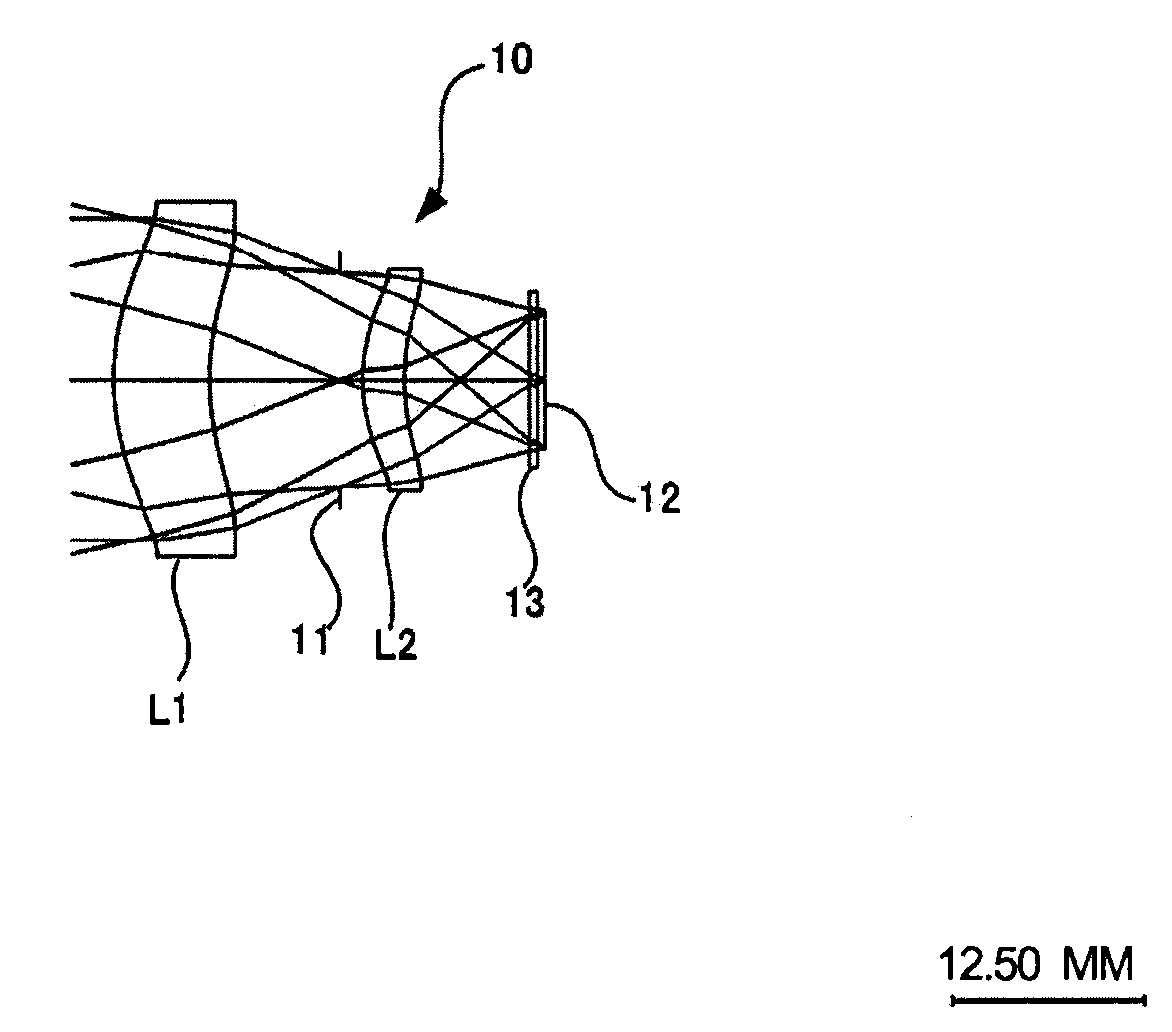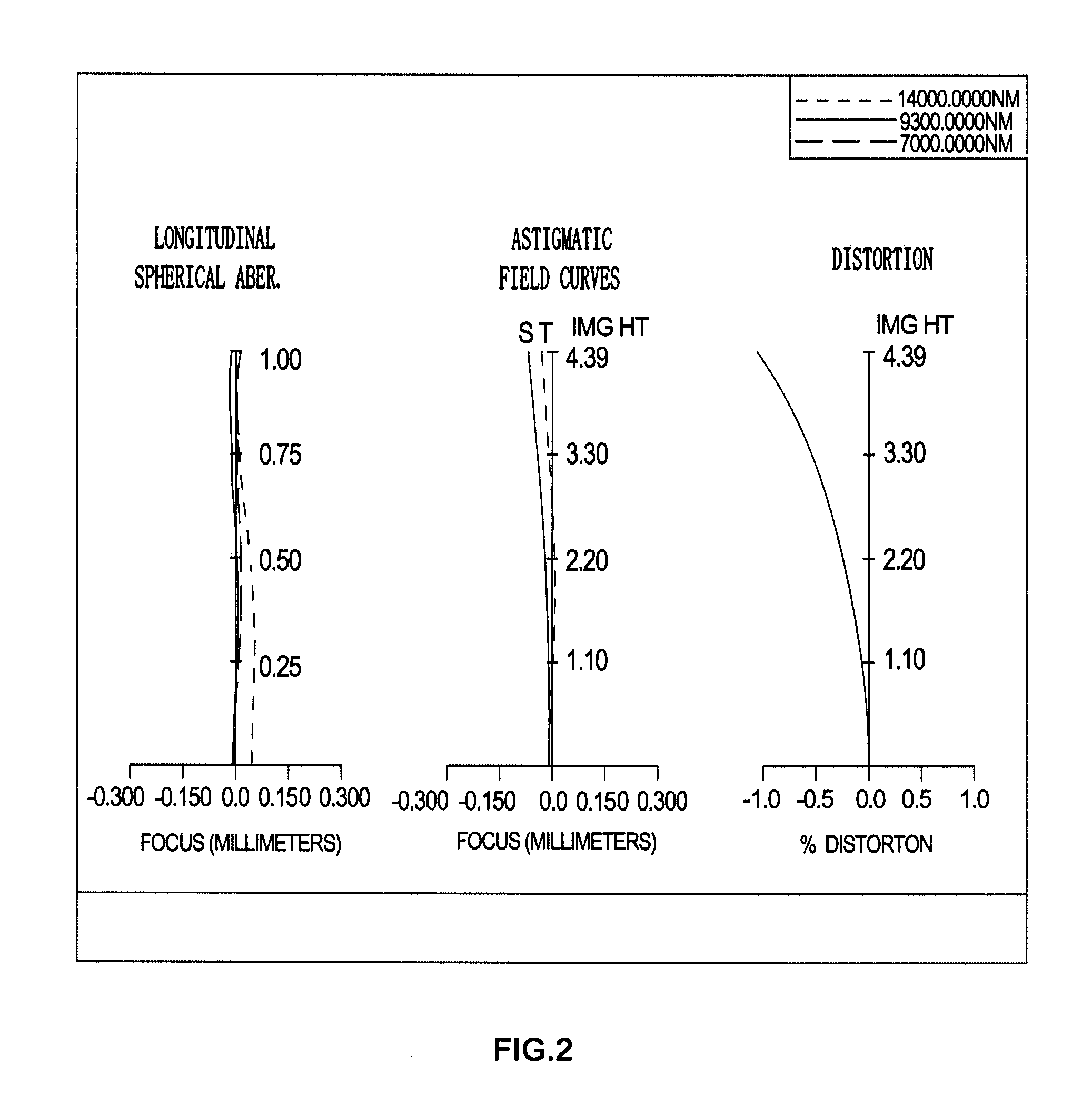Infrared optical system
a technology optical system, applied in the field can solve the problems of narrow range of eccentric error, inability of infrared optical system, easy lens formation, etc., and achieve the effect of reducing the length of the entire optical system, reducing the cost of production, and increasing the production cost of the optical system
- Summary
- Abstract
- Description
- Claims
- Application Information
AI Technical Summary
Benefits of technology
Problems solved by technology
Method used
Image
Examples
first embodiment
[0039]The embodiment of the infrared optical system 10 will be described below. The infrared optical system 10 is provided with the configuration as illustrated in FIG. 1. Also, the infrared optical system 10 satisfies the condition below, wherein f denotes the focal length of the entire system, and f1 denotes the focal length of the first lens L1.
2.0≦f1 / f . . . condition
[0040]Also, as to the infrared optical system 10, the F number is set to be 0.95, the focus f is set to be 19.7 mm, and the wavelength range is set to be 7 μm˜14 μm (central wavelength is 9.3 μm) though the wavelength range is a wavelength region of the near infrared of 1˜2 μm, the middle infrared of 3˜5 μm and the far infrared of 8˜12 μm. Here, setting the wavelength to be 7 μm˜14 μm is to widen the common wavelength range of far infrared of 8˜12 μm so as to make the imaging within the wide range of the far infrared wavelength region possible.
[0041]Also, as to the infrared optical system 10 according to the first ...
second embodiment
[0056]As to infrared optical system 20 the F number is set to be 0.95, the horizontal visual field standard is set to be f=19.40 mm, the visual angle is set to be 2ω=26°, the focal length of the first lens L1 is set to be f1=120.66 mm. And the numerical aperture NA is set to be 2.5-2.6. Now the following expression is satisfied:
2
0.3
[0057]Also, the first lens L1 and the second lens L2 are produced by molding chalcogenide glass. And, the aperture stop 11, the imaging element 12 and the detector window 13 has the same configuration as the first embodiment.
[0058]The lens data is illustrated as below
surface numberCurvature radius [mm]interval [mm]glass material116.55936.1956chalcogenide glass213.93678.3723321.09562.8044chalcogenide glass491.3894—namewavelength7 μm8 μm10 μm12 μm14 μmchalcogeniderefractive2.60922.60682.60102.59382.5847glassindex
[0059]Also, the aspherical equation Z, the coefficient of the optical path difference function, the optical path difference fu...
PUM
 Login to View More
Login to View More Abstract
Description
Claims
Application Information
 Login to View More
Login to View More - R&D
- Intellectual Property
- Life Sciences
- Materials
- Tech Scout
- Unparalleled Data Quality
- Higher Quality Content
- 60% Fewer Hallucinations
Browse by: Latest US Patents, China's latest patents, Technical Efficacy Thesaurus, Application Domain, Technology Topic, Popular Technical Reports.
© 2025 PatSnap. All rights reserved.Legal|Privacy policy|Modern Slavery Act Transparency Statement|Sitemap|About US| Contact US: help@patsnap.com



